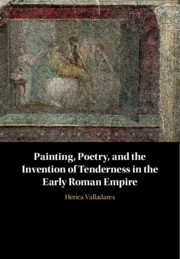5 results
Chapter 4 - The Cyclops (Cyclops inhospitalis)
-
- Book:
- The Trojan Horse and Other Stories
- Published online:
- 09 November 2023
- Print publication:
- 11 January 2024, pp 85-108
-
- Chapter
- Export citation
Chapter 5 - Odysseus the Schedographer
-
-
- Book:
- Byzantine Commentaries on Ancient Greek Texts, 12th–15th Centuries
- Published online:
- 07 August 2023
- Print publication:
- 08 September 2022, pp 148-168
-
- Chapter
- Export citation
Two - The Tenderness of Monsters
-
- Book:
- Painting, Poetry, and the Invention of Tenderness in the Early Roman Empire
- Published online:
- 26 November 2020
- Print publication:
- 17 December 2020, pp 84-139
-
- Chapter
- Export citation
Chapter 2 - Dante Alighieri, Poet without a City
-
- Book:
- The City of Poetry
- Published online:
- 03 December 2020
- Print publication:
- 17 December 2020, pp 63-111
-
- Chapter
- Export citation

Painting, Poetry, and the Invention of Tenderness in the Early Roman Empire
-
- Published online:
- 26 November 2020
- Print publication:
- 17 December 2020

